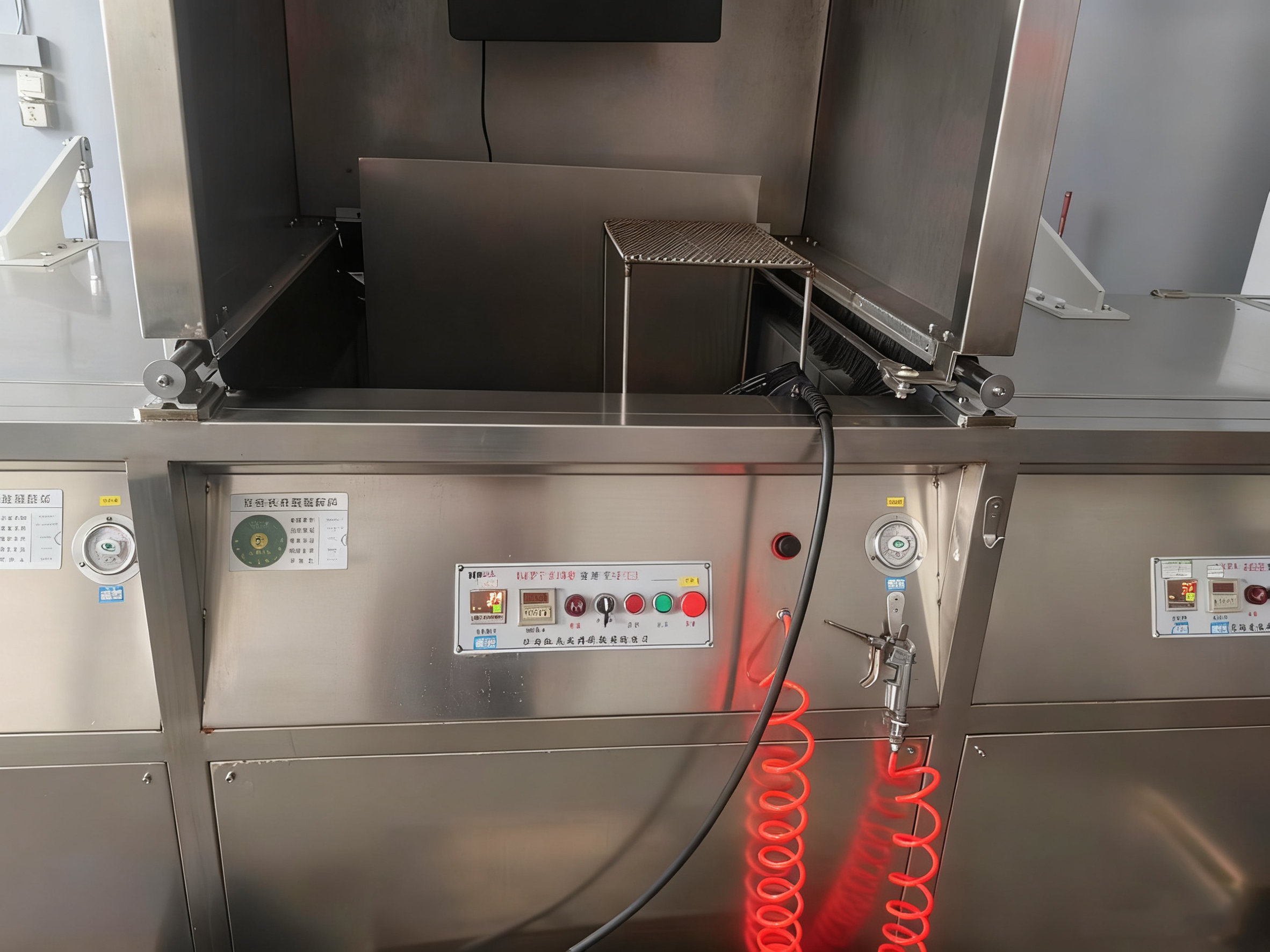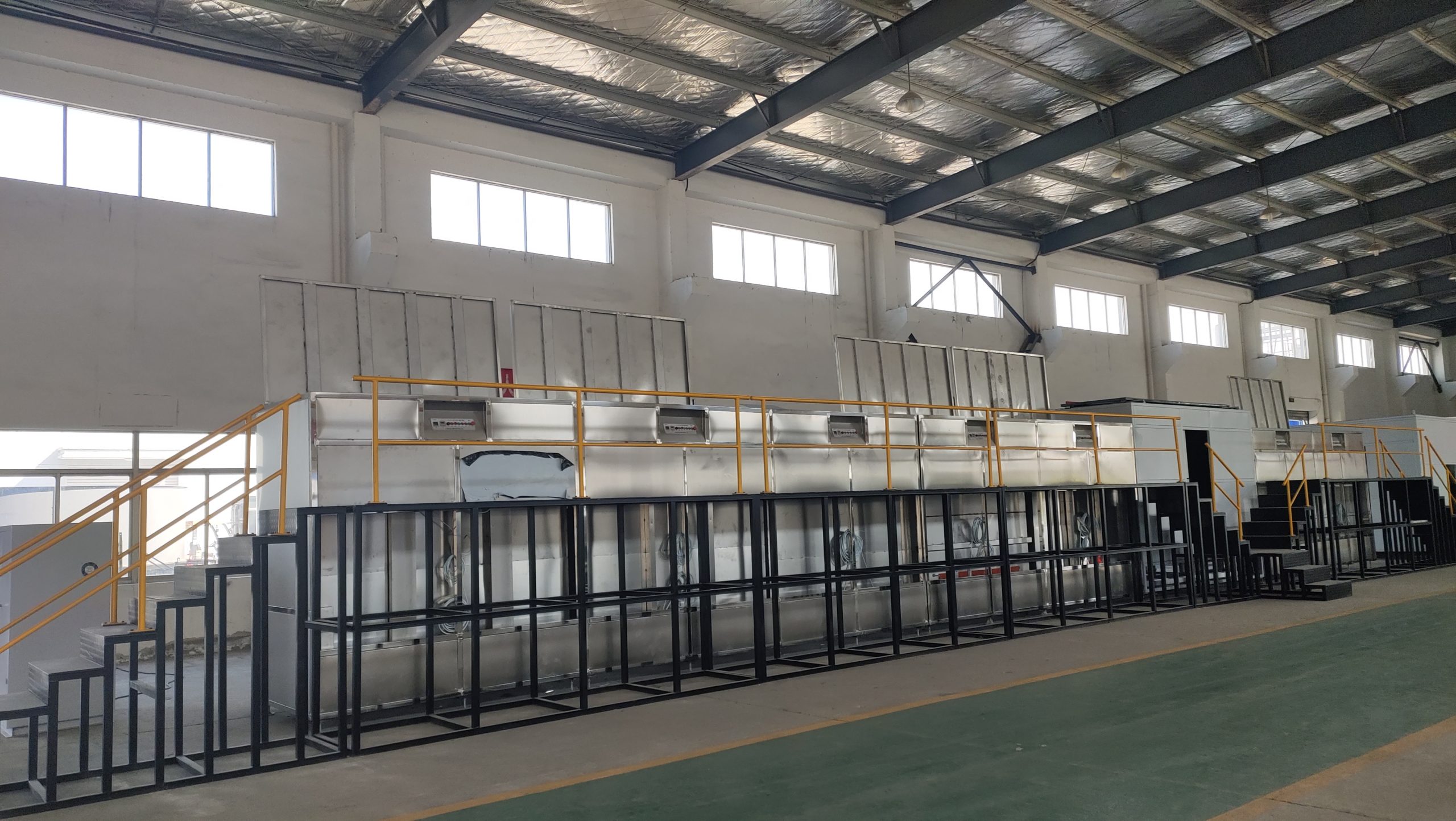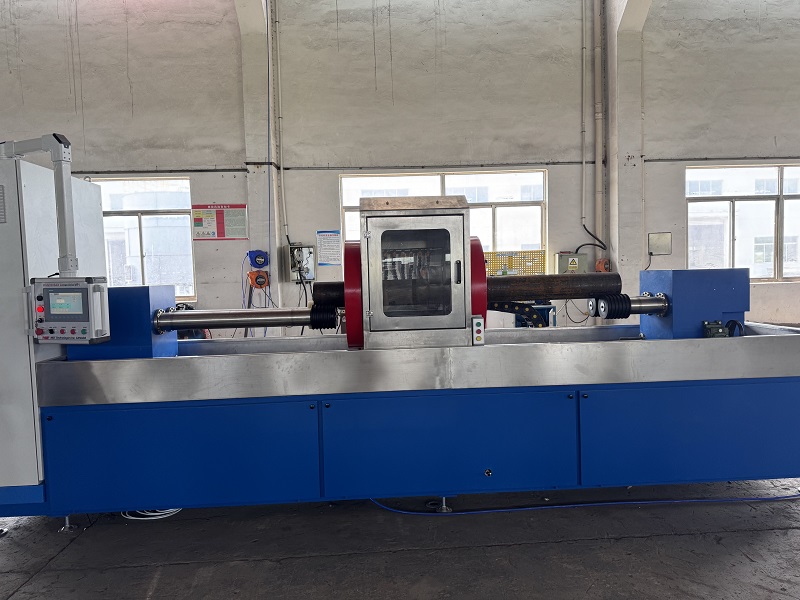Learn how to choose the best penetrant removal method (Method A, B, C, or D) for your fluorescent penetrant inspection line. Compare sensitivity, cost, and applications with ASTM E1417 compliance.
Fluorescent Penetrant Inspection (FPI), also known as liquid penetrant testing, is one of the most widely applied non-destructive testing (NDT) methods for detecting surface-breaking defects. It is used in industries such as aerospace, automotive, shipbuilding, nuclear, and precision manufacturing.
One of the most important considerations when designing a penetrant inspection line or selecting penetrant materials is the removal method. According to ASTM E1417, four different methods are defined: Method A (Water-Washable), Method B (Post-Emulsifiable, Lipophilic), Method C (Solvent-Removable), and Method D (Post-Emulsifiable, Hydrophilic).
Understanding the differences between these methods is essential to ensure the right balance of sensitivity, cost, and efficiency.
Method A – Water-Washable Penetrant
-
Description: The penetrant contains built-in emulsifiers, allowing excess penetrant to be removed directly with water.
-
Advantages:
-
Simple process, fast operation.
-
Suitable for high-volume production.
-
-
Limitations:
-
Lower sensitivity compared with other methods.
-
Not recommended for critical aerospace or defense components.
-
-
Typical Applications: Automotive parts, weldments, fasteners, castings in general industry.
Method B – Post-Emulsifiable (Lipophilic) Penetrant
-
Description: The penetrant itself is not water-washable. A separate oil-based emulsifier is required to make it removable with water.
-
Advantages:
-
Controlled removal process, higher sensitivity than Method A.
-
Better for complex geometries or high-value parts.
-
-
Limitations:
-
Requires additional processing tanks for emulsifier.
-
Slightly higher cost and process time.
-
-
Typical Applications: Aircraft engine parts, precision castings, titanium alloy components.
Method C – Solvent-Removable Penetrant
-
Description: Excess penetrant is wiped away using a clean cloth moistened with an approved solvent.
-
Advantages:
-
Simple and inexpensive equipment.
-
Flexible, suitable for field or on-site inspections.
-
-
Limitations:
-
Not suitable for large-scale production.
-
Operator-dependent, consistency may vary.
-
-
Typical Applications: On-site inspection, repair shops, local weld testing, small batches.
Method D – Post-Emulsifiable (Hydrophilic) Penetrant
-
Description: Requires a water-based emulsifier, which is more selective in removing surface penetrant without affecting flaw indications.
-
Advantages:
-
Highest sensitivity, excellent for detecting very fine surface cracks.
-
More precise control of emulsification compared with Method B.
-
-
Limitations:
-
Complex process, requires advanced equipment and skilled operators.
-
Higher investment cost.
-
-
Typical Applications: Aerospace, defense, nuclear power, and other industries requiring maximum sensitivity.
How to Select the Right Method?
Choosing the correct penetrant removal method depends on several factors:
-
Sensitivity Requirements
-
Standard industrial inspection → Method A
-
High-sensitivity inspection (aerospace, nuclear) → Method D
-
-
Production Scale
-
High-volume, mass production → Method A
-
Small batches or local inspection → Method C
-
-
Industry Standards & Certification
-
Aerospace and defense → Method D is commonly specified.
-
General automotive and manufacturing → Method A is more cost-effective.
-
-
Cost & Equipment Investment
-
Limited investment or portable testing → Method C
-
Automated penetrant inspection line → Method B or D
-
Conclusion
Each penetrant removal method—A, B, C, or D—has its advantages and limitations. Method A is ideal for cost-effective, high-volume production, while Method D offers the highest sensitivity and is preferred in critical industries like aerospace. Method B provides a good balance of control and sensitivity, and Method C is best suited for small-scale or field inspections.
When selecting a fluorescent penetrant inspection line, manufacturers should carefully evaluate their part materials, defect detection requirements, production scale, and applicable standards such as ASTM E1417 and ISO 3452.
👉 Our company provides customized penetrant inspection lines that can be designed to support Method A, B, C, or D processes, ensuring compliance, efficiency, and high-quality results for your industry needs.









